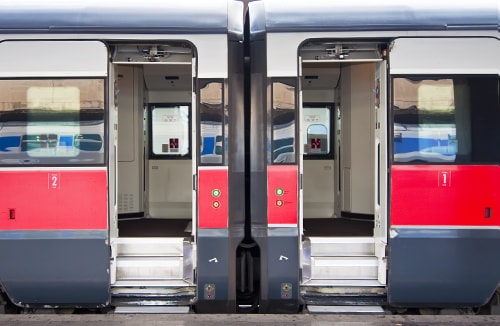As systems become increasingly complex, safety engineering pursues the important goal of minimising hazards, which may arise from many different factors and functions, to a residual risk that is as small as possible. In structural integration, safety engineering is responsible for ensuring that vital systems remain safe even if individual components fail. There are a wide number of qualitative and quantitative methods for analysing the safety of systems or subsystems and their functions. Here are a few to serve as examples.
FMEA (Failure Mode and Effects Analysis) is used primarily in the planning and development phase and only considers single faults, unlike FTA (Fault Tree Analysis), which examines faults that occur in combination.
Hazard and risk analysis classifies potential hazards and risks, taking into account the possible effects of undesirable system behaviour under all predictable operating conditions. Risk classes and different safety integration levels are defined for this purpose.
The IEC 61508 standard is considered the original prototype of many standards that relate to functional safety. It describes the complete basic lifecycle of safety-critical systems and divides systems with regard to their hazard potential into four requirements or risk classes (Safety Integrity Level / SIL). IEC 61508 enables the creation of further product and application-specific international standards.
In rail engineering, the most crucial of these are the EN 50126, 50128 and 50129 standards, developed by the European Committee for Electrotechnical Standardization (CENELEC), which are continually being further modified and have been adopted as DIN standards. The EN 50126 standard deals with the specification and proof of the reliability, availability, maintainability and safety (RAMS) of rail applications. The EN 50128 standard addresses the procedures, principles and measures required for software safety, whereas EN 50129 deals with safety-critical hardware, the whole system including software and regulatory approval processes.
InterEngineer performs process-related development of safety requirements. Once a safety plan has been created, hazards are then identified based on a risk analysis, which can later be resolved in the form of safety reports. A hazard log is created and kept continually updated. Risks that cannot be processed any further then enter the chain of evidence as residual risks. Finally, a proof of safety is created.
InterEngineer has established a successful, many times proven, computer-based process that is accepted by technical assessors. It enables homologation processes to be transparently designed and streamlined, and costs and lead times to be downsized.
Safety compliance
Our team assists you in bringing your products in line with standards and improving your processes. More…
Safety engineering
We take you through complex systems and our safety engineers are always at hand to help. More…
Functional verification
Making verification more efficient with our Meet the Standard software. More…










